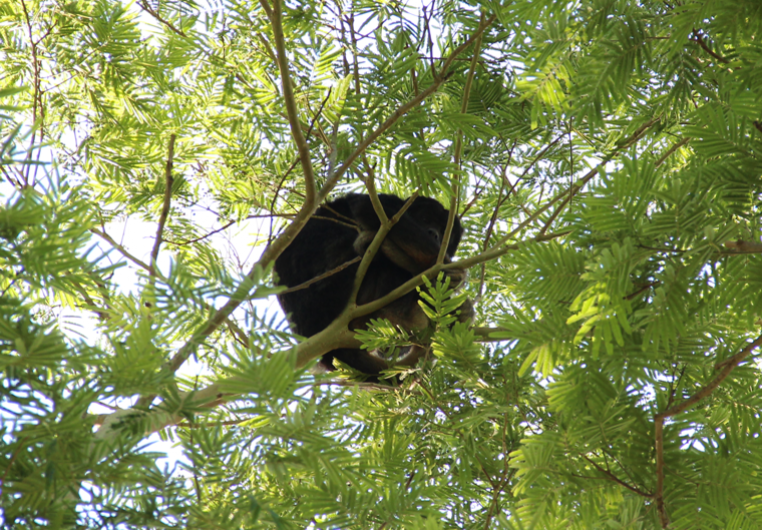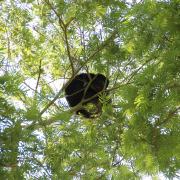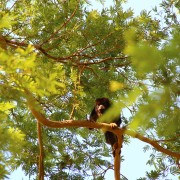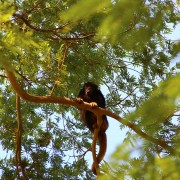Biodiversity
 Howler Monkey
Alouatta caraya | Humboldt, 1812
Howler Monkey
Alouatta caraya | Humboldt, 1812

Characteristics: The black howler monkey is a medium-sized primate species. The adult male is black, while females and juveniles are yellowish-brown. Sexual dimorphism is extreme: all black males weigh, on average, 6.7kg, while females are light brown and weigh, on average, 4.5 kg. Juveniles have the same colors as females, and males turn black when they reach approximately 5kg in weight.
Like other species of the Alouatta genus, the animals vocalize, often spontaneously. This seems more to aim to regulate territory use, signaling the ownership of a given space to other groups. In the event of vocalizations of groups foreign to a pack's territory, the alpha male vocalizes and starts searching the area where such vocalizations came from.
Distribution: This is the species of this genus with the greatest geographical distribution, occurring from Southwestern Brazil to Northeastern Argentina, Eastern Bolivia, and Paraguay.
Habitat: Tropical forests of the savannas, "Caatinga" scrubland, Pantanal, Southern Fields, and parts of the Amazon Rainforest. They may occur in primary and secondary forests, and in environments disturbed by human activity, such as forest fragments covering a few hectares of area.
Habits: Always seen in groups. Their main activity, i.e., removing parasites from each other's fur, is an affective way of bonding with the group.
Diet: Howler monkeys are folivorous-frugivorous. Such a diet includes leaves (shoots, new, mature, and petioles), flowers, stems, skins, and lichens.
Breeding: These monkeys live in social groups of up to four adult females and fewer adult males, in addition to sub-adults, youngsters, and infants. Males reach sexual maturity in 5 to 5.5 years, while females in 3.5 and 4.5 years. Females gestate a single infant, which is born in a period of 180-190 days.
In the UFRA area: Spotted in Restored Native Forests and Native Forests.






